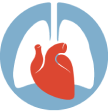Prophylaxis and Management of Arrhythmias After Thoracic Surgery
This survey was designed to help inform readers about current practices in prophylaxis
for and management of supraventricular arrhythmias after major thoracic surgery.
Participants were asked to respond to questions regarding perioperative management
of thoracic surgery patients. They were asked to assume that their patients had
no history of cardiac arrhythmia and were undergoing esophagectomy or major lung
resection.
The incidence of such arrhythmias was 10% to 20% in most practices, which is similar
to what is reported in the current literature. Twenty percent of surgeons used
prophylaxis routinely, most commonly a beta blocker, and half the surgeons never
used prophylaxis. A variety of drugs were used to treat SVT when it developed,
including, in descending order of frequency, amiodarone, beta blockers, digoxin,
and calcium channel blockers.
Interestingly, the vast majority of surgeons treated the arrhythmias themselves.
Just under two thirds of respondents indicated that a cardiologist became involved
in the treatment of these arrhythmias less than 20% of the time, indicating that
the treatments provided by surgeons were generally successful.
| 1. What is the incidence of postoperative supraventricular arrhythmias in such patients in your practice? |
|||
|---|---|---|---|
| Response Percent |
Response Count |
||
| 10% | 37.8% | 70 | |
| 20% | 36.2% | 67 | |
| 30% | 20.5% | 38 | |
| 40% or more | 5.4% | 10 | |
| answered question | 185 | ||
|
|
skipped question |
0
|
|
| 2. Do you use pharmacologic prophylaxis in this patient population? |
|||
|---|---|---|---|
| Response Percent |
Response Count |
||
| Yes, routinely | 18.4% | 34 | |
| Yes, only in selected patients | 34.6% | 64 | |
| No | 47.0% | 87 | |
| answered question | 185 | ||
|
|
skipped question |
0
|
|
| 3. Please check all drugs you normally use for prophylaxis. |
|||
|---|---|---|---|
| Response Percent |
Response Count |
||
| Digoxin | 28.3% | 32 | |
| Beta blocker | 77.9% | 88 | |
| Calcium channel blocker | 16.8% | 19 | |
| answered question | 113 | ||
|
|
skipped question |
72
|
|
| 4. Please check all drugs you normally use for treatment. |
|||
|---|---|---|---|
| Response Percent |
Response Count |
||
| Digoxin | 40.2% | 72 | |
| Beta Blocker | 60.9% | 109 | |
| Calcium channel blocker | 37.4% | 67 | |
| Adenosine | 4.5% | 8 | |
| Amiodarone | 79.3% | 142 | |
| answered question | 179 | ||
|
|
skipped question |
6
|
|
| 5. When a patient develops a postoperative supraventricular arrhythmia, who initially manages this problem? |
|||
|---|---|---|---|
| Response Percent |
Response Count |
||
| Treating surgeon | 76.8% | 142 | |
| Intensive care specialist | 11.4% | 21 | |
| Primary care physician | 0.5% | 1 | |
| Cardiologist | 11.4% | 21 | |
| answered question | 185 | ||
|
|
skipped question |
0
|
|
| 6. In what percentage of patients who develop supraventricular arrhythmia does a cardiologist become involved in therapy? |
|||
|---|---|---|---|
| Response Percent |
Response Count |
||
| 10% | 41.6% | 77 | |
| 20% | 18.9% | 35 | |
| 30% | 13.5% | 25 | |
| 40% or more | 25.9% | 48 | |
| answered question | 185 | ||
|
|
skipped question |
0
|
|
| 7. In what region is your surgical practice based? |
|||
|---|---|---|---|
| Response Percent |
Response Count |
||
| North America | 44.3% | 82 | |
| Europe | 38.4% | 71 | |
| South America | 4.9% | 9 | |
| Asia | 9.7% | 18 | |
| Africa | 2.7% | 5 | |
| answered question | 185 | ||
|
|
skipped question |
0
|
|
Prophylaxis and Management of Arrhythmias After Thoracic Surgery
This survey was designed to help inform readers about current practices in prophylaxis
for and management of supraventricular arrhythmias after major thoracic surgery.
Participants were asked to respond to questions regarding perioperative management
of thoracic surgery patients. They were asked to assume that their patients had
no history of cardiac arrhythmia and were undergoing esophagectomy or major lung
resection.
The incidence of such arrhythmias was 10% to 20% in most practices, which is similar
to what is reported in the current literature. Twenty percent of surgeons used
prophylaxis routinely, most commonly a beta blocker, and half the surgeons never
used prophylaxis. A variety of drugs were used to treat SVT when it developed,
including, in descending order of frequency, amiodarone, beta blockers, digoxin,
and calcium channel blockers.
Interestingly, the vast majority of surgeons treated the arrhythmias themselves.
Just under two thirds of respondents indicated that a cardiologist became involved
in the treatment of these arrhythmias less than 20% of the time, indicating that
the treatments provided by surgeons were generally successful.
| 1. What is the incidence of postoperative supraventricular arrhythmias in such patients in your practice? |
|||
|---|---|---|---|
| Response Percent |
Response Count |
||
| 10% | 37.8% | 70 | |
| 20% | 36.2% | 67 | |
| 30% | 20.5% | 38 | |
| 40% or more | 5.4% | 10 | |
| answered question | 185 | ||
|
|
skipped question |
0
|
|
| 2. Do you use pharmacologic prophylaxis in this patient population? |
|||
|---|---|---|---|
| Response Percent |
Response Count |
||
| Yes, routinely | 18.4% | 34 | |
| Yes, only in selected patients | 34.6% | 64 | |
| No | 47.0% | 87 | |
| answered question | 185 | ||
|
|
skipped question |
0
|
|
| 3. Please check all drugs you normally use for prophylaxis. |
|||
|---|---|---|---|
| Response Percent |
Response Count |
||
| Digoxin | 28.3% | 32 | |
| Beta blocker | 77.9% | 88 | |
| Calcium channel blocker | 16.8% | 19 | |
| answered question | 113 | ||
|
|
skipped question |
72
|
|
| 4. Please check all drugs you normally use for treatment. |
|||
|---|---|---|---|
| Response Percent |
Response Count |
||
| Digoxin | 40.2% | 72 | |
| Beta Blocker | 60.9% | 109 | |
| Calcium channel blocker | 37.4% | 67 | |
| Adenosine | 4.5% | 8 | |
| Amiodarone | 79.3% | 142 | |
| answered question | 179 | ||
|
|
skipped question |
6
|
|
| 5. When a patient develops a postoperative supraventricular arrhythmia, who initially manages this problem? |
|||
|---|---|---|---|
| Response Percent |
Response Count |
||
| Treating surgeon | 76.8% | 142 | |
| Intensive care specialist | 11.4% | 21 | |
| Primary care physician | 0.5% | 1 | |
| Cardiologist | 11.4% | 21 | |
| answered question | 185 | ||
|
|
skipped question |
0
|
|
| 6. In what percentage of patients who develop supraventricular arrhythmia does a cardiologist become involved in therapy? |
|||
|---|---|---|---|
| Response Percent |
Response Count |
||
| 10% | 41.6% | 77 | |
| 20% | 18.9% | 35 | |
| 30% | 13.5% | 25 | |
| 40% or more | 25.9% | 48 | |
| answered question | 185 | ||
|
|
skipped question |
0
|
|
| 7. In what region is your surgical practice based? |
|||
|---|---|---|---|
| Response Percent |
Response Count |
||
| North America | 44.3% | 82 | |
| Europe | 38.4% | 71 | |
| South America | 4.9% | 9 | |
| Asia | 9.7% | 18 | |
| Africa | 2.7% | 5 | |
| answered question | 185 | ||
|
|
skipped question |
0
|
|




